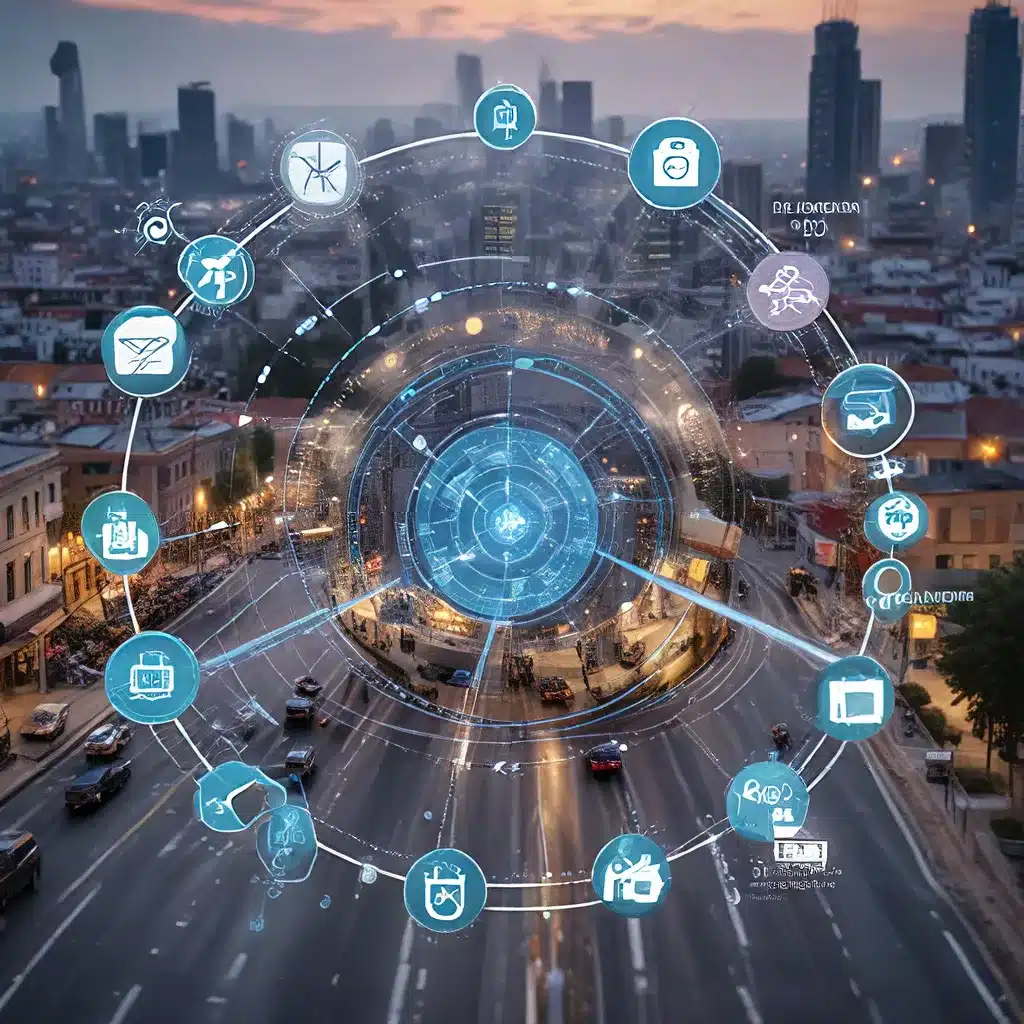
The rapid advancements in sensor networks and Internet of Things (IoT) technologies have ushered in a new era of data-driven insights and intelligent decision-making across a wide range of industries. By leveraging the power of sensor-generated data and applying predictive analytics, organizations can now unlock unprecedented levels of understanding and optimization in their IoT environments.
Harnessing the Power of Sensor Data
At the heart of this transformative shift lies the ability to collect, analyze, and extract valuable insights from the ever-increasing volume of data generated by a growing network of interconnected sensors. These sensors, embedded in a diverse array of devices and infrastructure, capture a wealth of information about the physical world, from environmental conditions to equipment performance and human activity.
By integrating sensor data with advanced data analytics and machine learning techniques, organizations can uncover hidden patterns, trends, and predictive insights that were previously out of reach. This powerful combination enables them to make informed decisions, anticipate potential issues, and optimize operational efficiency in ways that were simply not possible with traditional data-gathering methods.
Predictive Analytics: Transforming IoT Insights
One of the key advantages of sensor-driven predictive analytics in IoT environments is the ability to forecast future events and behaviors. By analyzing historical sensor data, combined with real-time monitoring, organizations can develop predictive models that anticipate equipment failures, environmental changes, or shifts in customer demand. This proactive approach allows for timely interventions, preventative maintenance, and strategic planning, ultimately leading to improved operations, cost savings, and enhanced customer experiences.
AstraZeneca’s research and development efforts showcases the transformative power of predictive analytics in the healthcare industry. By leveraging AI and machine learning to analyze genomic, clinical, and safety data, the pharmaceutical company has been able to uncover new disease insights, identify potential drug targets, and improve the efficiency of their drug discovery and development processes.
IoT Applications: Unlocking New Possibilities
The applications of sensor-driven predictive analytics in IoT environments are vast and diverse, spanning multiple industries and use cases. In the transportation sector, for example, sensor networks can be used to monitor traffic patterns, predict congestion, and optimize routing for both public and private transportation systems. This can lead to reduced emissions, improved commute times, and enhanced user experiences.
In the manufacturing industry, sensor-equipped machinery and production lines can provide real-time data on equipment performance, product quality, and energy consumption. By applying predictive analytics to this information, manufacturers can anticipate maintenance needs, identify opportunities for process improvements, and optimize energy usage, ultimately enhancing productivity, reducing costs, and ensuring product quality.
Smart city initiatives are another area where sensor-driven predictive analytics is making a significant impact. Sensors embedded in urban infrastructure, such as streetlights, waste management systems, and water distribution networks, can provide detailed insights into resource utilization, environmental conditions, and public safety. By analyzing this data, city planners and policymakers can make more informed decisions, optimize resource allocation, and enhance the overall quality of life for citizens.
Addressing IoT Security and Energy Challenges
As the adoption of sensor networks and IoT technologies continues to grow, it becomes increasingly important to address the security and energy management challenges that arise. Cybersecurity is a critical concern, as interconnected devices can provide entry points for malicious actors to access sensitive data or disrupt critical systems. Robust security protocols, encryption techniques, and secure communication channels are essential to protect IoT ecosystems from cyber threats.
Moreover, the energy consumption of IoT devices and sensor networks can have a significant impact on their operational efficiency and environmental sustainability. Energy-efficient sensor designs, power management strategies, and the integration of renewable energy sources are all crucial considerations in the development of sustainable IoT systems.
Research in the field of biotech and healthcare has shown how AI-powered image analysis can assist pathologists in accurately and efficiently analyzing tissue samples for disease biomarkers. This approach has the potential to streamline clinical trials and improve patient outcomes by accelerating the analysis of critical data.
The Future of Sensor-Driven Predictive Analytics
As the IoT landscape continues to evolve, the role of sensor-driven predictive analytics will become increasingly vital in unlocking new insights and optimizations across a wide range of industries. Advancements in sensor technology, improved data integration, and the continued development of predictive analytics and machine learning algorithms will drive the next generation of intelligent IoT systems.
Organizations that embrace and invest in sensor-driven predictive analytics will be well-positioned to gain a competitive edge, enhance operational efficiency, and deliver innovative products and services that meet the evolving needs of their customers and stakeholders.
By leveraging the power of sensor networks and predictive analytics, the future of IoT holds the promise of unprecedented insights, enhanced decision-making, and transformative solutions that can positively impact our communities, our industries, and our planet as a whole.